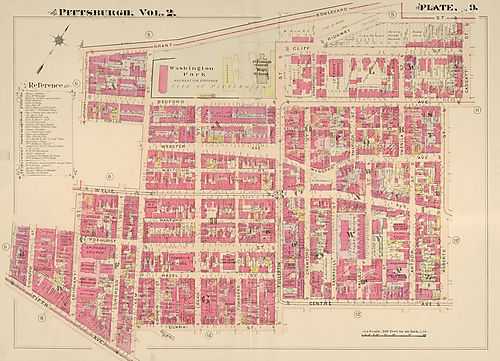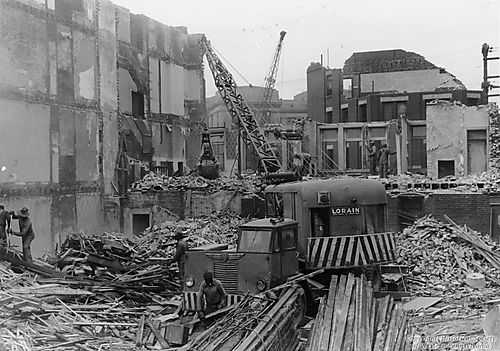Secret Pittsburgh
Living Experience at August Wilson House
By Sarah Jones
August Wilson was a successful poet and playwright, writing some of his plays based on the experiences he had while living in the Hill District. He was born into the Hill District in 1945 named Frederick August Kittel and lived at 1727 Bedford Avenue. He later changed his name to August Wilson in honor of his mother. Unlike many of Pittsburgh’s other neighborhoods at the time of Wilson’s birth, the Hill District was home to many different ethnic peoples. There was a significant population of European immigrants, such as Jewish and Italian, and Black persons living closely together (August Wilson House Community 2019). August Wilson experienced this diversity from the moment that he was born into the Hill District. The Hill District was a very poor community during this time evidenced by the absence of simple conveniences such as televisions and bathrooms. It is important to look at how August Wilson grew up and lived in the Hill District in order to more fully appreciate what he accomplished in adulthood. Incredibly Paul Ellis, Jr., who is August Wilson’s nephew, was able to purchase the property and, in 2007, August Wilson’s childhood home of 13 years was approved as a historical site and was named the August Wilson House. Therefore, the aspect of his early housing experiences can be explored by assessing the living conditions of the August Wilson House and the conditions in which neighbors lived.
During the late 1950s, demolition began in the Hill District to clear land for the Civic Arena and its large parking lot. Figure 1 captured demolition of a few of the hundreds of houses that were torn down. The Civic Arena has been replaced by what is now the PPG Paints Arena. The archive Historic Pittsburgh explains that 80 blocks were removed, 100 acres cleared, and 8000 residents were displaced (McClain 1957). The August Wilson House was not within the land marked for demolition for the Civic Arena however, deconstruction of buildings that were unstable or old continued throughout the Hill District. The August Wilson House remained standing even though it had some structural failings nor was yet recognized and protected as August Wilson’s former home. Furthermore, each building on either side of the August Wilson House was removed. Therefore, it is unclear and unknown as to why the building was not torn down.
For August Wilson, living in the Hill District during the 1940s and 50s were very much humble beginnings. This is evidenced by the history of the Hill District, from his personal accounts of living there, and from records of housing in the neighborhood. I had the opportunity to participate in a guided tour by Paul Ellis, Jr. of the August Wilson House with a University of Pittsburgh class in September 2019. At the time, there had not been much work done on the building. The only additions to the building from its original state was structural support so that further damage would not come to the building.
Touring the building was very interesting. There was no overhead lighting so I had to use cellphone light to find my path. The building had an intricate layout because of the sectioned off apartments. Families had lived here long after August Wilson and his family moved on to the Hazelwood neighborhood. Ellis navigated our way to the second story apartment that August Wilson shared with his family of five siblings and mother. We traveled up a tight stairway to a small room. Initially, the family only rented two rooms of the large building. Later, they would move into two additional rooms for more space (August Wilson House Community 2019). The walls were very bare showing that there were not any embellishments. The wallpaper had peeled off in many places exposing the wood boards underneath. The room was dirty and dusty from idleness and the windows were boarded. The walls were poorly insulated and there had only been a small radiator for heating. There was no evidence that the family had running water in the house or any plumbing. There was minimal electrical lighting in the two rooms. During the tour of the building, Ellis explained that when the family entered the apartment; they had to do so from the outside. The family would have to go through the tight space created by the August Wilson House and by the close building that once stood to the right in order to enter the apartment.
It is important to understand the living conditions that the people of the Hill District endured during the time that August Wilson was also living there in order to have a broader image of living conditions he experienced. The Historic Pittsburgh archive contains a book called ‘Social Conditions of the Negro in the Hill District of Pittsburgh’ that published the details of a survey completed by Ira De A. Reid, Director of the Department of Research of the National Urban League, in 1930 (Reid 1930). The research that she presented in the book looked specifically at each aspect of life for the black community in the Hill District. This research was conducted 15 years before August Wilson was born and is therefore one of the best archival materials that is available in order to understand the living conditions that August Wilson experienced as a child.
To summarize, the research split the Hill District into areas in order to survey them more efficiently and accurately. The area closest to the August Wilson House was the fifth section which observed Somers Street from Webster to Wylie Avenue, Belinda Street from Wylie to Webster, Lawson Street from Wylie to Webster, and Ishra Way from Lawson to Somers (Reid 1930). This section covered the Middle Hill District. The research qualitatively observed the streets of the area and surveyed the residents of the Hill District. They observed that streets were paved but did not have sidewalks, most of the houses were old, many toilets were outside, and there was a church on almost every street (Reid 1930). The residents of the Hill District most commonly answered that there was no advantage to living in the Hill District and that the main disadvantage was bad housing conditions and accumulation of rubbish and garbage in the streets (Reid 1930). A realtor company in Pittsburgh headed movement to add bathtubs to residences in the Hill District but this resulted in many people using the tub for things other than bathing such as a coal bin (Reid 1930), evidence that houses and families were lacking and in need of more important things than tubs at the time nor did they have the room for them.
Another insight gained from ‘Social Conditions’ was that it was common to find more than one ethnicity living in the same building. As mentioned earlier, the August Wilson House was an example of the Hill District’s melting pot. The Bella’s Market, located in the storefront of the building, was operated by the Jewish family who lived in the apartment above the store. During my tour of the August Wilson House, we were led up the stairs to this apartment and it was dramatically different in design than the apartment August Wilson lived in. There were not any signs of running water in this part of the building nor any significant upgrades compared to Wilson’s apartment, but the face of the apartment seemed grand after walking through Wilson’s former residence. The ceilings were much higher; the windows and door frames had detailed woodwork; there were decorative archways leading into the next room; the stairway had decorative spindles.
In conclusion, it is important to understand the conditions in which one grew up in order to more fully appreciate the person and their works as an adult. It is obvious that August Wilson grew up in poor social conditions, evidenced by the August Wilson House interior and records of the living conditions of the neighborhood, and yet the community of the Hill District held such a special place in his heart that he wrote some of his plays based on his time there. Life is not determined by what one has growing up but by how they use what they were given.
Works Cited
August Wilson House Community. 2019. August Wilson House. http://augustwilsonhouse.org/. Accessed December 5, 2019.
Explore PA HIstory.com. 2019. August Wilson Historical Marker. https://explorepahistory.com/hmarker.php?markerId=1-A-271. Accessed December 5, 2019.
G. M. Hopkins & Co. 1914. Central Business District, Crawford-Roberts. Plate 9. Pittsburgh.
McClain, James. 1957. Lower Hill District Demolition. Pittsburgh, May 14.
Reid, Ira De A. 1930. Social Conditions of the Negro in the Hill District of Pittsburgh. Pittsburgh: General Committee on the Hill Survey.
Winans Jr., William V. 1960. View of the Civic Arena from Bedford Avenue (3). Pittsburgh, October 1.


